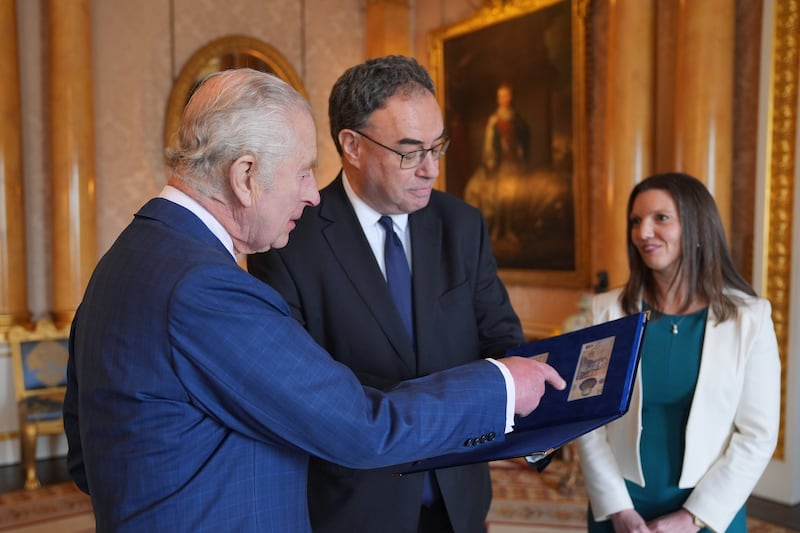The Treasury has denied that 1p and 2p coins are to be scrapped after none were ordered from the Royal Mint this year.
Reports had suggested the coins could be reaching the end of their life amid the continuing decline in cash use.
A Treasury spokesperson said: “We are not scrapping any coins.
“With estimates there are approximately 27 billion in circulation in the UK, many of which will be 1p and 2ps, we are confident there are enough coins in the system to meet demand.”
The number of coins issued into circulation reflects demand levels from UK banks and post offices.
The Royal Mint responds by issuing coins on behalf of the Treasury, which ultimately decides how many new coins are issued into circulation.
The Royal Mint said in a statement: “The Royal Mint’s core purpose is to make UK coins, and we continue to work closely with the Treasury to meet demand from UK cash centres.”
No 1p coins were minted in 2018 or 2019 and no 2p coins were minted in 2018, 2019, 2020 or 2022, according to figures on the Royal Mint’s website.
There has been speculation in previous years that the Treasury could be paving the way for the end of 1p and 2p coins, after comments were invited on the mix of coins in circulation.
But in 2019, government plans to safeguard the future of cash – from copper coins to larger banknotes – were set out.
Then-chancellor Philip Hammond said there would be no changes to the mix of coins and notes, with all denominations – from the penny to the £50 note – remaining in circulation.
In 2023, legislation was passed as part of the Financial Services and Markets Act, to protect access to cash.
A recent survey for ATM and cash access network Link indicated that nearly half (48%) of people expect to see a cashless society in their lifetime.
But, according to Link’s data, the average UK adult still withdrew around £1,500 from cash machines last year.
The Royal Mint has a “buffer stock” of coins to ensure the supply of coins for all denominations remains consistent.
Earlier this week, the Financial Conduct Authority (FCA) set out plans for new rules, coming into force from September 18, which will mean that banks and building societies shutting branches will need to do more to make sure people can still access cash.
The new powers will not prevent the closure of bank branches but the regulator will require banks to make sure they are plugging significant gaps in local cash access.
Several industry initiatives have also been taking place to help close gaps in cash access, such as the introduction of banking hubs, where different banks share facilities in one space.
The Post Office also has an agreement with several banks, which allows customers to carry out everyday transactions over its counters.
Its most recent figures show that, after two record-breaking cash-handling months at branches in April and May this year at Post Office branches, transactions edged down to £3.43 billion in June amid the wet weather.
Consumer group Which? said in May that more than 6,000 bank branches have closed since 2015.
Banks have highlighted changing trends in consumer behaviour, with fewer branch visits and people turning to mobile and online banking.
But FCA research found that three million people still rely on cash, with lower-income households disproportionately likely to be excluded from digital services.
There has been evidence that, during the cost-of-living crisis, people have been turning to coins and banknotes to help them balance their budgets.
A report issued by UK Finance this week found an increase in the percentage of people mainly using cash in 2023 to 2.6% of the population, from 1.7% in 2022.
The report said small rises in cash payments, against a backdrop of a longer-term decline, “tend to be during periods of economic uncertainty or recession”.
Increases in cash payments were seen following the financial crisis of 2008/2009 and in 2022 as the rising cost of living led some consumers to attempt to reduce their spending.
UK Finance said cash payment volumes returned to their long‑run downward trend in 2023, amid signs of improving consumer confidence.
Cash accounted for one in eight (12%) of all payments made in the UK during 2023, down from 14% in 2022.
While some people are heavily dependent on cash, for others coins and banknotes play a much less significant part in their lives, the report found.
Nearly two in five (39%) UK adults were living “largely cashless” lives last year.
Contactless payments represented nearly two-fifths (38%) of payments made in the UK in 2023.
With the contactless card transaction limit now standing at £100, some people may find swiping their plastic a handy alternative to rummaging in their wallet for cash.
UK Finance found that around one in three (34%) adults use mobile contactless payments every month – and it said there is scope for mobile contactless payments use to continue growing.
In June, banknotes featuring the King’s portrait started to be issued, marking the first time that the sovereign has been changed on the Bank of England’s notes.
More than 4.6 billion Bank of England notes are in circulation.









